#Ethicalclothing
Text
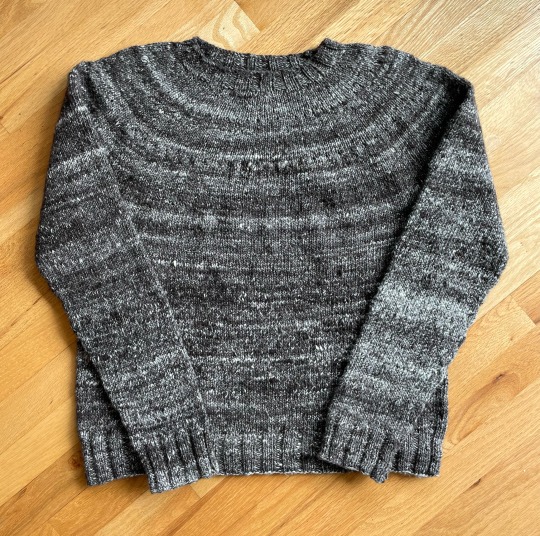
Just finished this seamless top-down pullover. I used a Noro yarn made with humanely raised wool from New Zealand and raw silk, all dye-free.
109 notes
·
View notes
Text

Oversized linen dress perfect for warmer holiday days and for those who love a sustainable and ethical lifestyle.
49 notes
·
View notes
Video
Some pieces I made recently ✨🔥
Leave me a 🖤 if you want to see the next drop!
#handmadeclothing#lunaticpin#handmadesmallbiz#handmadebusiness#smallbusinessuk#smallbusinesslondon#smallbizowner#ethicalclothing#ethicalfashion#alternative#alternativeclothing#imadeyourclothes#whomadeyourclothes#womeninbusiness#alternativehandmade#e17#fashion#fashionbrand#fashioninstagram#sizeinclusive#ukbased#imadeit
33 notes
·
View notes
Photo
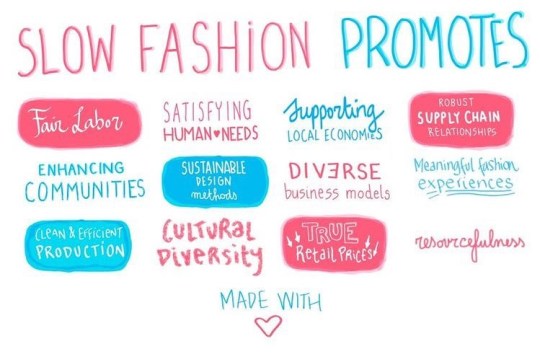
Keeping you in the know about #slowfashion 🛍️🙏🏿🥳❤️😉 #qotd #quotestoliveby #fairtrade #whomadeyourclothes . . . . . . #reusereducerecycle♻️ #ethicalfashion #ethicalclothing #ethicalstyle #ethicallymade #ethicalshopping #ethicalbrand #ethicalootd #ethicalliving #recycleandplay #recycleyourstyle #recyclefashion #recyclereuse #slowfashion #slowdesign #sustainability #sustainablefashion #sustainableliving #sustainablymade #sustainabledesign #sustainablysourced #sustainableclothing #quotestagram (at Boutique Espace Urbain) https://www.instagram.com/p/Cn5U4bCAWXR/?igshid=NGJjMDIxMWI=
#slowfashion#qotd#quotestoliveby#fairtrade#whomadeyourclothes#reusereducerecycle♻️#ethicalfashion#ethicalclothing#ethicalstyle#ethicallymade#ethicalshopping#ethicalbrand#ethicalootd#ethicalliving#recycleandplay#recycleyourstyle#recyclefashion#recyclereuse#slowdesign#sustainability#sustainablefashion#sustainableliving#sustainablymade#sustainabledesign#sustainablysourced#sustainableclothing#quotestagram
8 notes
·
View notes
Text
Sustainable Fashion Revolution: The Ultimate Guide to Dress Responsibly and Look Fabulous in 2023

Introduction
Sustainable fashion has gained significant attention in recent years, as consumers and brands alike are becoming more aware of the negative impact of the fashion industry on the environment and society. Sustainable fashion refers to the production, use, and disposal of clothing items in an environmentally responsible and socially conscious manner. Here are some key takeaways from the provided web search results regarding sustainable fashion and how it can help us dress responsibly in 2023:
- Sustainable fashion is an emerging trend in the fashion industry, but progress remains slow .
- Creating a greener wardrobe is a simple step towards sustainability. It involves taking stock of your existing wardrobe, choosing sustainable fabrics, and supporting sustainable brands .
- Sustainable fashion brands use natural or recycled fabrics that require less or no chemical treatment, less water, and less energy. Some of the most sustainable fabrics include linen, hemp, organic cotton, and Tencel .
- There are several sustainable fashion brands that offer stylish and environmentally friendly clothing options. These brands source upcycled fabrics and eco-minded materials for their clothing, and prioritize ethically sourced and sustainable materials and working conditions. Some of the top sustainable fashion brands include Christy Dawn, Reformation, Cuyana, Amour Vert, Whimsy + Row, and Mara Hoffman .
- Sustainable fashion is a key step towards dismantling the fast fashion industry, which is responsible for more greenhouse gas emissions than the shipping and aviation industries combined .
- Sustainable fashion is also gaining traction among consumers. A 2020 report on sustainability in fashion found that 67% of shoppers now consider environmentally friendly fabrics when choosing a brand .
- The fashion industry is taking steps towards sustainability, such as Copenhagen Fashion Week's sustainability requirements for participating designers, with the goal of setting a new industry standard .
In conclusion, sustainable fashion is a key aspect of dressing responsibly in 2023. By choosing sustainable fabrics, supporting sustainable brands, and taking steps towards a greener wardrobe, we can contribute to a more environmentally friendly and socially conscious fashion industry.
Sustainable Materials for Fashion

Sustainable fashion has gained increasing attention in recent years due to the negative environmental impact of the fashion industry. Several sustainable materials can be used in a fashion that minimizes waste, reduces carbon emissions, and conserves natural resources. Some of the most commonly used sustainable materials in fashion include organic cotton, recycled cotton, hemp, linen, bamboo, cork, ECONYL® recycled polyester, Lyocell, Modal, ECOVERO™, Piñatex, and Bananatex® .
The fashion industry's conventional raw materials sourcing has contributed significantly to the planet's declining health, including petroleum refining for polyester, water contamination and depletion, soil degradation, and deforestation for industrial cotton and viscose production. Consequently, the industry is turning to sustainable materials that prioritize the environment and promote ethical practices in production.
Polyester, which accounts for approximately 65% of all clothing, is produced from fossil fuels and consumes 70 million barrels of oil annually, causing significant pollution to the environment. Similarly, the fashion industry uses considerable amounts of fossil fuel-based plastic for packaging and hangers. Less than one per cent of clothing is recycled to make new clothes, which contributes to significant waste generation in the industry .
Wool is another sustainable fabric that can be produced sustainably, depending on how it's made. Climate Beneficial™ Wool produced on carbon farming landscapes captures carbon and puts it back into the soil. Wool is also compostable, insulating, and does not shed plastic microfibers .
Several sustainable materials are emerging, and luxury brands are turning to them to respond to customer demand for greener textiles. Examples include mushroom leather and pineapple fabric, which are gaining popularity and could play a significant role in sustainable fashion in the future .
Several sustainable fashion brands prioritize using sustainable materials in their production, including Outerknown, which sources 90% of its fibres from sustainable materials such as recycled mango fruit, organic cotton, recycled Polyurethane (PU) leftovers, and environmentally-certified leather. Similarly, Reformation, based in Los Angeles, uses upcycled sneakers made of sustainable materials such as recycled mango fruit, organic cotton, recycled Polyurethane (PU) leftovers, and environmentally-certified leather. .
Other sustainable materials include linen and hemp, which were commonly used in clothing in the past. Hemp is three times stronger than cotton, UV-resistant, durable, breathable, and can be grown without fertilizer or pesticides. It also requires less water to grow compared to cotton . Recycled plastic bottles are also a sustainable material used in fashion production, and they are being adopted by many designers due to their eco-friendliness .
In conclusion, several sustainable materials are available for use in fashion production, ranging from organic and recycled cotton, hemp, linen, and bamboo to mushroom leather and pineapple fabric. Sustainable fashion brands prioritize
The Rise of Recycled Materials in Sustainable Fashion
Sustainable fashion has become a growing trend in the fashion industry, and the use of recycled materials is one of the ways that fashion brands are becoming more eco-friendly. Recycled materials, such as organic cotton, hemp, and linen, are being used in fashion lines to reduce waste and carbon emissions. Some fashion brands are even implementing compostable packaging and branding to further reduce their environmental footprint .
The use of recycled materials in sustainable fashion is not only beneficial to the environment but it can also be implemented through fair labour practices, such as the Maasai beadwork. Additionally, upcycling, a process that transforms waste and byproducts of manufacturing into new products, has gained popularity in the fashion industry. Designers like Ancuta Sarcas have even started upcycling discarded Nike shoes and high-waste materials like mesh to create unique fashion pieces .
The COVID-19 pandemic has further accelerated the demand for eco-friendly fashion. Fashion brands, manufacturers, and traders are looking at more sustainable approaches to meet the market demand for products meeting environmental, social, and governance (ESG) criteria. Carbon emissions reduction is also one of the targets of global efforts to promote sustainable economic development .
Overall, recycled materials are becoming increasingly prevalent in a sustainable fashion as designers and brands look for ways to reduce waste and carbon emissions while still producing stylish and unique fashion pieces.
Organic Cotton: The Benefits for the Environment and Your Wardrobe
Organic cotton is cotton grown without the use of synthetic chemicals such as fertilizers, pesticides, or genetically modified organisms (GMOs). It offers various benefits to the environment and to the people wearing the clothes made from it.
One of the most significant benefits of organic cotton is that it requires much less water to grow compared to conventional cotton. The farming process used in organic cotton production relies on rainwater for about 80% of its needs, resulting in approximately 71% less water used overall . Additionally, organic cotton cultivation methods avoid the use of synthetic fertilizers, which can lead to soil degradation and pollution of water sources, ultimately helping to prevent water contamination .
Furthermore, organic cotton production methods play a role in mitigating climate change by avoiding the use of synthetic chemicals, reducing energy consumption, and sequestering carbon more efficiently in healthier soils . As such, it has been established that organic cotton cultivation has significant environmental benefits, such as promoting biodiversity, reducing greenhouse gas emissions, and helping to prevent soil erosion and degradation .
Aside from its environmental benefits, organic cotton is also better for the farmers who grow it. They are not exposed to harmful chemicals that can cause a range of health problems, including respiratory issues and cancer . Moreover, organic cotton is also softer and less likely to cause irritation than conventional cotton, making it a better choice for those with sensitive skin .
In summary, the benefits of organic cotton are numerous, and it is an excellent choice for those looking to reduce their impact on the environment while also supporting the health and well-being of farmers and consumers.
The Future of Sustainable Textiles: Innovations and Breakthroughs
Sustainable textiles are becoming increasingly important in the fashion industry. Several recent developments suggest that innovative and groundbreaking new textiles are on the horizon. Researchers at MIT are exploring the intersection of textile research and sustainable materials, seeking potential synergies that could advance the field . McKinsey and Company predict that there will be significant growth in sustainable fashion consumption, particularly in products made from more sustainable materials such as organic cotton . Science Daily reports on new textiles that can change shape when heated, potentially offering designers a wide range of new options for responsive and adjustable aesthetics . Drapers Online covers a variety of textile innovations, offering insights into the latest developments in the industry . Finally, the European Commission has launched a roadmap for the future of sustainable textiles in the EU, outlining efforts to increase the circularity of the fashion ecosystem . With these developments and more, it seems clear that sustainable textiles are an area of rapid innovation and growth, and we can expect exciting breakthroughs in the near future.
The Circular Fashion Movement

The Circular Fashion Movement is a growing global trend in the fashion industry that aims to promote sustainable and responsible production and consumption of clothing while reducing the negative impact of the fast fashion industry on the environment and society. Circular fashion involves designing, producing, and using clothes that are meant to be used and circulated responsibly and effectively for as long as possible, and then safely decomposed or repurposed when they are no longer of use to humans .
The movement has gained significant momentum in recent years, with numerous fashion brands and organizations committing to circularity commitments and initiatives, such as take-back and resale programs, upcycling, and closed-loop production systems . The Circular Fashion Pledge is a simple concept that asks fashion brands to pledge to one or more circularity commitments by the end of the calendar year, such as enabling take-back or resale programs .
Circular fashion has been identified as a key solution to the environmental and social challenges posed by the fast fashion industry, including waste, pollution, exploitation of labour, and depletion of resources . The movement has also gained significant attention and support from sustainability experts and advocates, who believe that it can help to create a more equitable, resilient, and sustainable fashion industry that benefits both people and the planet.
Overall, the Circular Fashion Movement represents a growing global trend towards more sustainable and responsible fashion production and consumption and has the potential to revolutionize the way we approach clothing and fashion in the future.
Understanding Circular Fashion: What It Is and Why It Matters
Circular fashion is a concept that has emerged from the intersection of the circular economy and sustainable and ethical fashion . Essentially, it refers to a system in which all garments can be reused, recycled, or returned to the earth (by virtue of being biodegradable or compostable), reducing the hugely damaging impact the fashion industry has on the planet . In other words, products are designed and developed with the next use in mind, with the aim of keeping resources in use for as long as possible and minimizing waste .
The fashion industry has long been known for its negative impact on the environment, including the strain on natural resources, the vast amount of CO2 emissions it produces, and the giant heaps of clothing that end up in landfills . Circular fashion is one solution to this problem, as it aims to reduce the harmful impact of fast fashion by circulating and reusing articles for as long as possible before decomposing them safely .
Circular fashion also means using sustainable and natural materials in production, such as organic cotton, bamboo, and Tencel, and avoiding synthetic and plastic fabrics like polyester and nylon derived from fossil fuels . Additionally, the production and transport of items should be powered by renewable energy sources .
In summary, circular fashion is a sustainable and ethical approach to fashion that aims to reduce waste and minimize the harmful impact of the industry on the environment. It involves reusing, recycling, and upcycling as much as possible, using sustainable and natural materials, and powering production and transport with renewable energy sources .
From Cradle to Cradle: The Principles of Circular Fashion Design
Circular fashion design principles are heavily influenced by the cradle-to-cradle (C2C) approach, which is a design framework for creating products that mimic natural systems and support the circular economy. The C2C approach promotes the high-quality use and circulation of biological and technical nutrients, protecting and enriching ecosystems while enabling economic productivity . The aim of the C2C approach is to optimize products from the molecular to modular level and establish these principles in all industry sectors, including the textile industry, consumables, buildings, automotive, packaging, and cosmetics .
Circular fashion design principles follow the four principles of the circular economy: preservation of natural capital, optimization of available resources, risk reduction, and renewable flow of resources and products . The principles of circular fashion design also emphasize the importance of planning the entire lifecycle of a product at the design stage, incorporating aspects such as sustainable materials, biodegradability, recyclability, and durability. Circular fashion aims to eliminate waste, pollution and the negative environmental impact of the fashion industry, by designing products for reuse, recycling, and composting .
Closing the Loop: How Brands are Embracing Circular Fashion
Circular fashion refers to a closed-loop system that rethinks and redesigns the way products are made, used, and discarded to reduce waste and promote sustainability. Many fashion and luxury companies, including LVMH, Kering, H&M, VF Corp, and Gap, have embraced circularity as a way to reduce their environmental footprint . A fully closed-loop apparel recycling system in California could achieve a total holistic impact of $11 billion to $13 billion a year, based on the estimate of the total holistic impact of approximately $5.5 billion to $6.5 billion from closed-loop recycling of polyester, which represents a significant portion of textile production . In order to combat unethical practices in the fashion and textile industry, the industry must embrace a closed-loop system, rethinking and redesigning the way products are made, used, and discarded . Many fashion brands are now working towards closing the loop on waste and promoting circular design, such as Loop Swim, a brand that transforms post-consumer plastic bottles into sun-protective swimwear . In February 2022, Reformation launched RefRecycling, a program that allows customers to return any well-worn Ref goods to the company to be recycled, thus promoting circular fashion and reducing waste .
Ethical and Slow Fashion
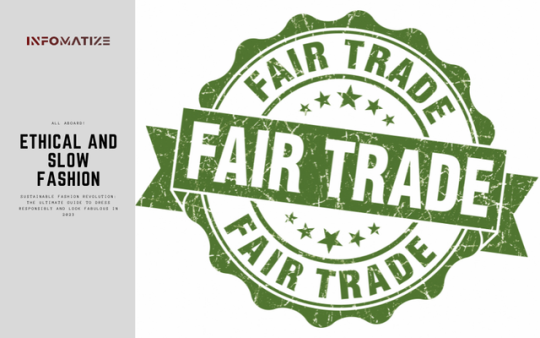
Ethical and slow fashion are two related concepts that are gaining more attention in the fashion industry. While they share some similarities, they also have distinct differences.
Ethical fashion focuses on ensuring fair treatment of workers throughout the supply chain, from safe working conditions to fair wages and eliminating child and slave labour . It also considers the treatment of animals, making sure that the materials used in clothing production are cruelty-free . On the other hand, slow fashion is about producing high-quality, timeless clothing that is sustainable and environmentally friendly . Slow fashion leans into sustainable practices, such as using eco-friendly materials and minimizing waste .
Both ethical and slow fashion is countercultural, going against the current societal norms that prioritize fast and cheap production over ethical and sustainable practices. Hallmarks of slow fashion include longer production timetables, fewer items produced, and more ethical labour practices, with an emphasis on creating timeless pieces that will stand the test of time .
In summary, ethical fashion is focused on the fair treatment of workers and animals throughout the supply chain, while slow fashion is about sustainable and timeless clothing production. Both concepts are aimed at creating a more sustainable and ethical fashion industry, challenging the norm of fast and cheap fashion production.
Slow Fashion: The Antidote to Fast Fashion
Slow Fashion is an approach to clothing production that takes into account all aspects of the supply chain, including the environmental and social impact, as well as animal welfare. It aims to create sustainable, ethical, and high-quality garments, produced on a smaller scale with more eco-conscious materials and locally manufactured to reduce transportation and promote fair wages for workers . In contrast to fast fashion, where clothing is produced quickly and cheaply with a focus on trends and low prices, slow fashion considers the long-term impact of the production process and encourages consumers to value quality over quantity .
If you're interested in adopting slow fashion practices, here are a few tips to get started:
- Have a clear-out of your closet and donate or sell the clothes you don't wear anymore to avoid cluttering and promote the use of existing garments .
- Buy clothes made from sustainable and eco-friendly materials such as organic cotton, recycled fabrics, or biodegradable fibres .
- Choose locally-produced garments to support your community and reduce the environmental impact of transportation .
Read the full article
#Consciousfashion#Eco-consciousfashion#Eco-friendlyclothing#Eco-friendlyfashion#Ethicalclothing#Ethicalfashion#Fashionrevolution#Responsiblefashion#Slowfashion#Sustainableclothingbrands#Sustainablefashion#Sustainablefashionbloggers#Sustainablefashionbrands#Sustainablefashionforallages#Sustainablefashionforallbeliefs#Sustainablefashionforallbodytypes#Sustainablefashionforallbudgets#Sustainablefashionforallcelebrations#Sustainablefashionforallclimates#Sustainablefashionforallcultures#Sustainablefashionforallethnicities#Sustainablefashionforallevents#Sustainablefashionforallgenders#Sustainablefashionforallhobbies#Sustainablefashionforallholidays#Sustainablefashionforallinterests#Sustainablefashionforalllifestyles#Sustainablefashionforalllocations#Sustainablefashionforallnationalities#Sustainablefashionforalloccasions
2 notes
·
View notes
Photo

Editorial Lookbook for Gita Omri Spring/Summer Collection 2020 (Date of shoot: 9-6-2019) Designer: Gita Omri-Brown IG: @gitaomriofficial https://www.instagram.com/gitaomriofficial Photos: Udor Photography IG: @udorphoto www.instagram.com/udorphoto Photo Assistant: Mike Tavares IG: @mtavphoto https://www.instagram.com/mtavphoto/ Model: Kristen Picone IG: @kristenpicone_ Makeup Artist: Jeffrey 'Picasso' Lindsey IG: @facepicasso https://www.instagram.com/facepicasso/ MUA Assistant: Eve Chen Hair Stylist: Sharon Alexander @doneupbeauty https://www.instagram.com/doneupbeauty/ Hair Assistant: Ric Brenin Videography & Editing: Cristhian Andrews IG: @cristhianandrews https://www.instagram.com/cristhianandrews . . . . #nyfw #nyfw2020 #sizebeautuful #mylook #sizeinclusive #inclusive #madeinnyc #luxury #luxurywomenswear #ethicalclothing #ethicalbrand #designer #nycdesign #stealmylook #mystyle #chic #effortless #gitaomriofficial #fashion #inclusivesizing #fashionphotography #editorialfashion #nyc #newyorkfashion #udor #udorphoto (at Industry City, Sunset Park) https://www.instagram.com/p/CodSpy0PbpO/?igshid=NGJjMDIxMWI=
#nyfw#nyfw2020#sizebeautuful#mylook#sizeinclusive#inclusive#madeinnyc#luxury#luxurywomenswear#ethicalclothing#ethicalbrand#designer#nycdesign#stealmylook#mystyle#chic#effortless#gitaomriofficial#fashion#inclusivesizing#fashionphotography#editorialfashion#nyc#newyorkfashion#udor#udorphoto
2 notes
·
View notes
Photo
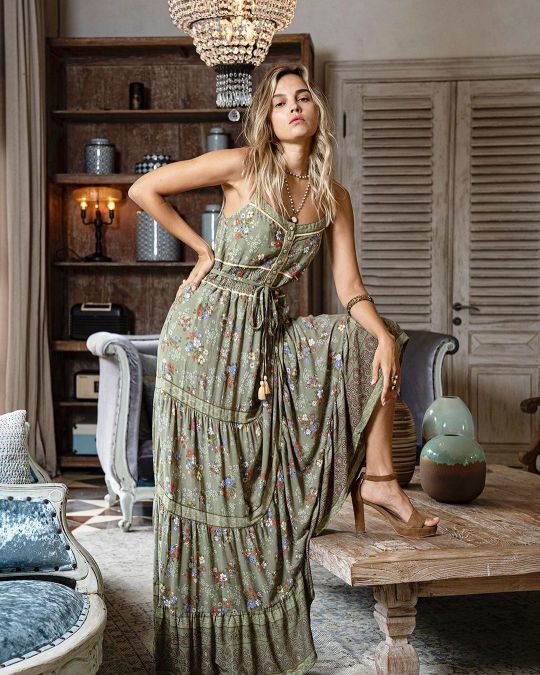
Still one of our best selling dresses, the Joanna Maxi Frill Dress in Olive, Terracotta and Sage. Use our code NEWYEAR for 35% off during our End or Season Sale 💥 #endofseasonsale #sale #ootd #ootdfashion #ootdstyle #whatiwear #whatiwore #handmade #handmadewithlove #sustainablefashion #ethicalfashion #ethicalclothing #ethicallymade #whomademyclothes #bohostyle #bohochic #bohovibes #bohofashion #bohemianstyle #bohemianfashion https://www.instagram.com/p/Cnp9om1ysS2/?igshid=NGJjMDIxMWI=
#endofseasonsale#sale#ootd#ootdfashion#ootdstyle#whatiwear#whatiwore#handmade#handmadewithlove#sustainablefashion#ethicalfashion#ethicalclothing#ethicallymade#whomademyclothes#bohostyle#bohochic#bohovibes#bohofashion#bohemianstyle#bohemianfashion
4 notes
·
View notes
Photo

Can’t stop, won’t stop! As promised, I am wearing it again. This time with some otter favourites from mine and my mum’s wardrobe! @perricutten trousers via @ebayfashion @sportscraft silk shirt via @vinniesqld @marcjacobs sparkly boots via @therealreal @perricutten jacket @lifelineshopsqld @marcjacobs bag @fabfindsmarkets #ethicalclothing #ethicalfashion #sustainablefashion #slowfashion #ethicallymade #sustainableclothing #vintageshop #ethicalfashionblogger #fashionrevolution #slowfashionmovement #buynothingnew #30wears #styledsustainable #slowfashionseason #oootd #fashionrevolution #chooseused #circularfashion #feelgoodfinds (at Newstead, Queensland) https://www.instagram.com/p/CfCuwToh6xb/?igshid=NGJjMDIxMWI=
#ethicalclothing#ethicalfashion#sustainablefashion#slowfashion#ethicallymade#sustainableclothing#vintageshop#ethicalfashionblogger#fashionrevolution#slowfashionmovement#buynothingnew#30wears#styledsustainable#slowfashionseason#oootd#chooseused#circularfashion#feelgoodfinds
2 notes
·
View notes
Text
Exclusive Party Dresses.
Check Details: https://www.dailydeal365.com/2024/04/elevate-your-style-with-womens-party.html
#clothing#clothingbrand#clothingline#mensclothing#kidsclothing#womensclothing#usedclothing#clothingstore#womenclothing#babyclothing#boutiqueclothing#sisesaclothing#modestclothing#handmadeclothing#customclothing#clothingboutique#urbanclothing#wholesaleclothing#childrensclothing#clothingcompany#menclothing#sullenclothing#sustainableclothing#premiumclothing#bangkokclothing#clothings#girlsclothing#ethicalclothing#clothingbrands#muslimahclothing
0 notes
Text

Urban Finesse presents our Bamboo Crew Neck T-Shirt in stunning maroon! 🌿✨ Soft, stylish, and eco-friendly – it’s more than just clothing; it’s a statement of sustainable living. Get yours now at Urban Finesse!
Reach us: https://urbanfinesse.in/products/bamboo-crew-neck-maroon
Bamboo Crew Neck T-shirt
#BambooTee#EcoFashion#SustainableStyle#BambooClothing#GreenFashion#BambooFashion#EcoFriendlyWear#CrewNeckTee#BambooApparel#SustainableFashion#BambooComfort#NatureFriendlyWear#BambooThreads#OrganicTShirt#NaturalFibers#BambooEssentials#FashionForChange#EthicalClothing#BambooChic#ConsciousFashion
0 notes
Text
Fashion Goals.

Walking into the week like a sustainable fashion icon. 💁♂️🌿 Who said saving the planet can't be fabulous? #EcoChicGoals
#SustainableFashion#EthicalClothing#SlowFashion#ConsciousFashion#EcoFriendlyStyle#GreenWardrobe#FashionRevolution#FairTradeFashion#CircularFashion#EthicalStyle#SustainableStyle#FashionWithPurpose#MindfulFashion#LowImpactFashion
0 notes
Text

#sustainable#3d#circularfashion#circularism#techpacks#pattern#digital patterns#crafts#textile#yarn#ethicalclothing#ethicallysourced#knits#fashion designing#fashion illustration#digital illustration#ondemand#apparelmanufacturer#tshirts#womenfashion#menswear#womenclothing#mensclothing#kidswear#baby clothing manufacturers#activewearmanufactureruk#private label activewear#custom activewear manufacturers#custommade#bespoke
0 notes
Text

Slow Fashion
0 notes
Photo
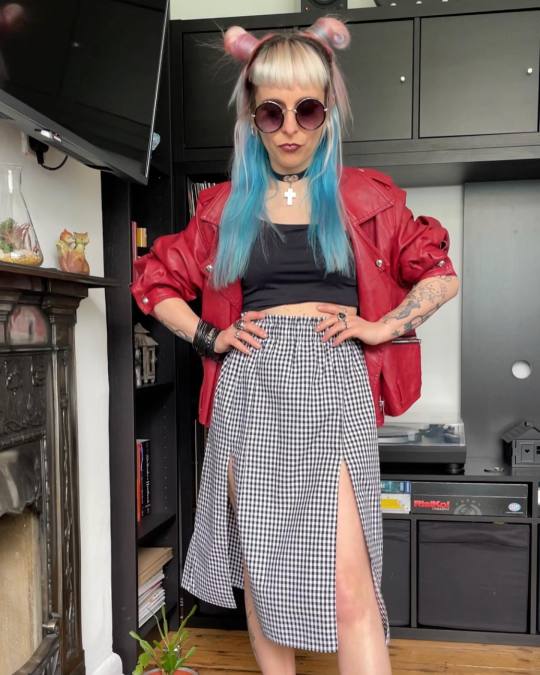
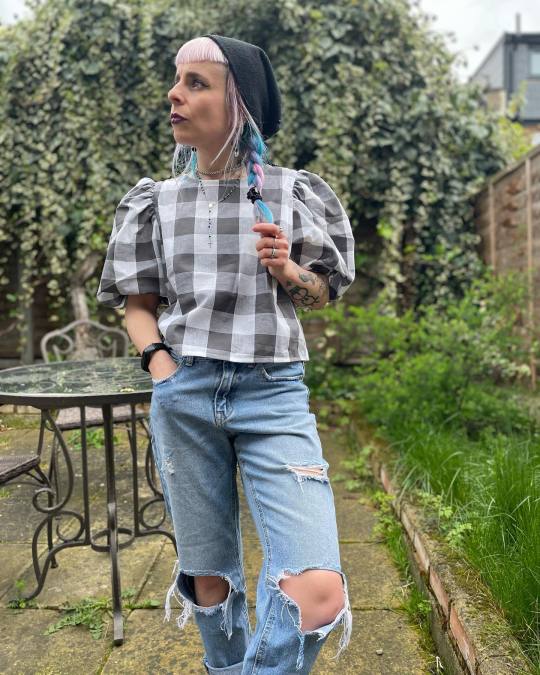

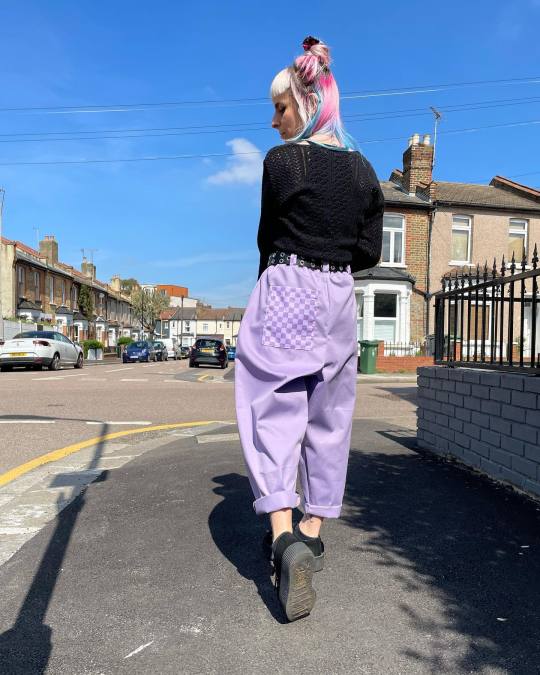

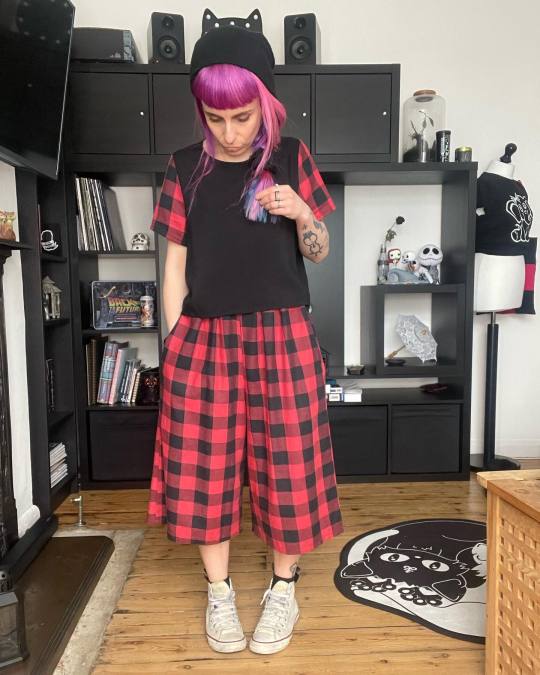
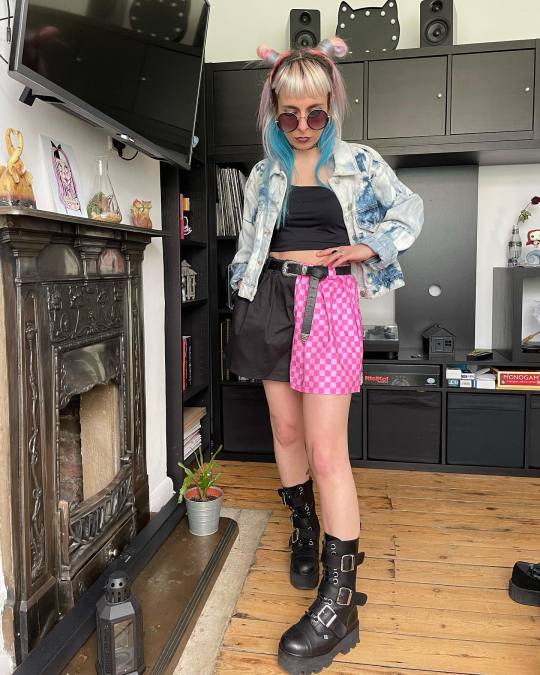
Which look is your favourite?
✨LOOK 1: Lily top with b&w gingham sleeves and denim jeans ✨LOOK 2: Valerie trousers in Scottish tartan and black crop top ✨LOOK 3: Johnny trousers in lilac and black top ✨LOOK 4: Black and pink split shorts, crop top and denim jacket ✨LOOK 5: Ines top and Valerie trousers in black and red ✨LOOK 6: Cindy top in grey large gingham and denim ✨LOOK 7: Maggie skirt, crop top and red jacket
All the items are made to order and available on my shop🖤
#handmadeclothing#lunaticpin#handmadesmallbiz#handmadebusiness#smallbusinessuk#smallbusinesslondon#smallbizowner#ethicalclothing#ethicalfashion#alternative#alternativeclothing#imadeyourclothes#whomadeyourclothes#womeninbusiness#alternativehandmade#e17#fashion#fashionbrand#fashioninstagram#sizeinclusive#ukbased
8 notes
·
View notes
Photo

Happy Saturday! #slowfashionmovement #slowfashionseason 🥰🥳👏🏿❤️ #beintheknow . . . . . . . . #sustainablefashion #sustainability #sustainableliving #ecofashion #ecofriendly #ecoresponsable #handmadewithlove #handmadejewelry #handmadebag #ethicalfashion #ethicalclothing #ethicallymade #ethicalbrand #localbusiness #supportlocal #shoplocal #consumelocal (at Boutique Espace Urbain) https://www.instagram.com/p/CqOMbzCA_xs/?igshid=NGJjMDIxMWI=
#slowfashionmovement#slowfashionseason#beintheknow#sustainablefashion#sustainability#sustainableliving#ecofashion#ecofriendly#ecoresponsable#handmadewithlove#handmadejewelry#handmadebag#ethicalfashion#ethicalclothing#ethicallymade#ethicalbrand#localbusiness#supportlocal#shoplocal#consumelocal
1 note
·
View note
Text
What I talk about when I talk about clothes
Introducing friends to higher end menswear stores can be a weirdly intimate challenge. I had the chance to take a few friends of mine to Imogene and Willies, and while they care about what they wear, I think I & W is a different quality of clothes. Certainly a different price.
Without fail, the price point is the the first hurdle, and kicks off a conversation about why jeans cost $250 and a thermal is $100. The sticker shock is real, but it also segues nicely into a discussion around ethical consumption, buying for life, paying livable wages, and buying quality over fast fashion.
Separately, it also begins a conversation around what I’m spending on clothes as I buy religiously from I & W, 3sixteen, iron heart, etc.
It’s never a conversation I’m comfortable having. I don’t believe it’s my place to tell someone how to spend their money. What was gratifying, however, was their willingness to buy into that mindset, and the appreciate the products in the store.
Everyone ended up buying something, and seemed pretty genuinely pleased with the fit and the overall aesthetic.
More broadly, I found myself more able to talk about what I look for, make what felt like educated recommendations, and engage in hobby that I find isolating at times.
I think the overall message may be closer to “good friends enjoy your passion around your hobby, even if they don’t share it” but regardless, it’s always nice introducing people to a brand I love, and hopefully beginning a sustainable interest in the clothes they wear.
1 note
·
View note